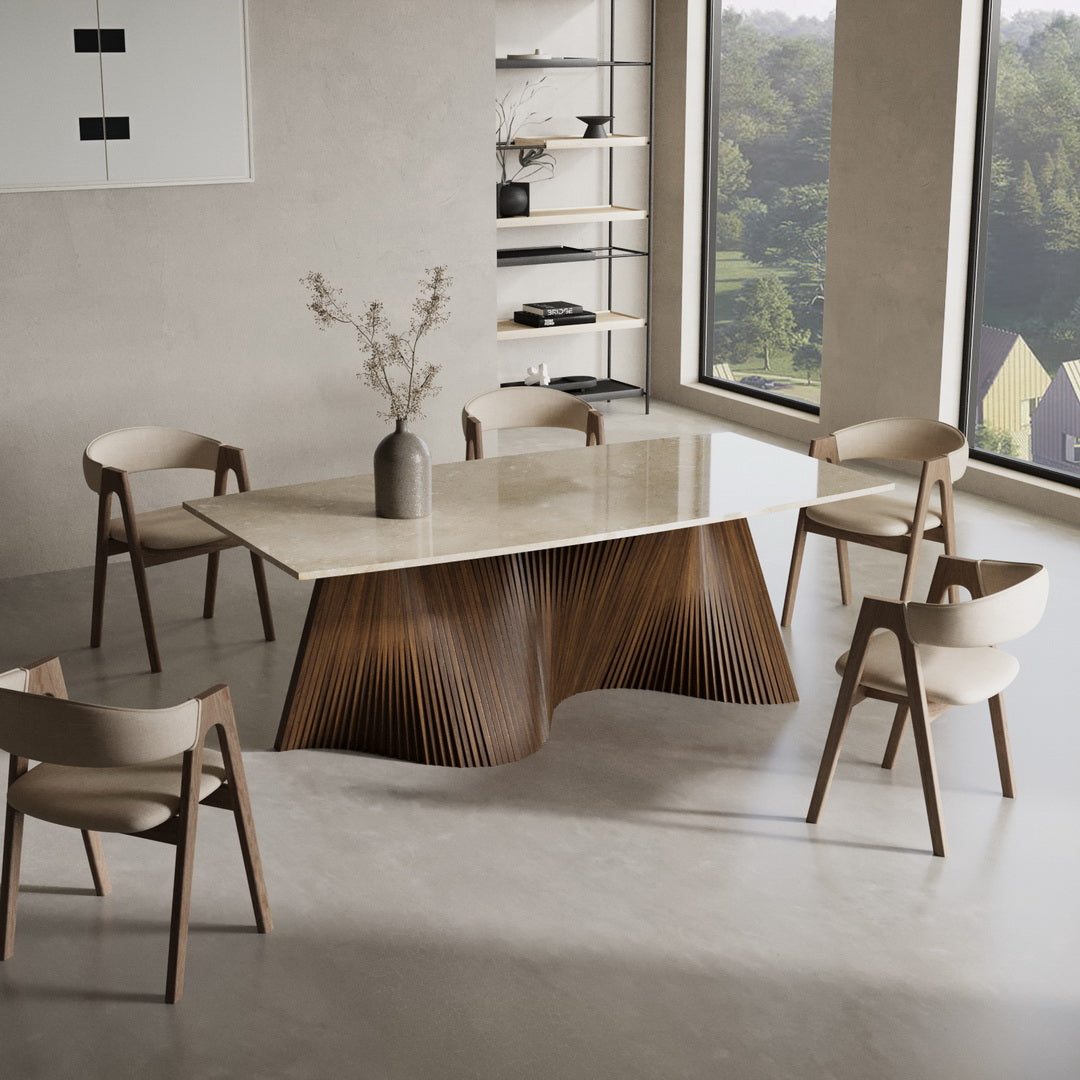
Why natural stone furniture is a sustainable choice
|
|
Time to read 2 min
Anyone who has ever sat at a solid natural stone table immediately senses that this piece of furniture is more than just a functional object. It's a small eternity in your home – durable, elegant, and of timeless beauty.
But natural stone is not only aesthetically pleasing, but also, above all, sustainable.
A comparison with common materials such as plastic, ceramic or wood clearly shows why natural stone is also an environmentally friendly choice.
1. Longevity: A table for life
Natural stone : Granite or marble, if properly cared for, will last for generations. A dining table can easily be used for 50, 80, or even 100 years. The natural stone countertop can last for centuries.
-
Wood : While solid wood is durable, it is sensitive to moisture, scratches, and temperature fluctuations. Average lifespan: 20–30 years.
Ceramic : Very hard, but prone to chipping and breakage – often difficult to repair.
Plastic : Plastic furniture lasts on average only 5–10 years before it becomes unsightly or brittle.
👉 According to a study by the EU Commission, the average lifespan of plastic furniture is only about one fifth of that of solid wood furniture.
2. Ecological footprint
Natural stone : A natural product, it requires no chemical binding agents or energy-intensive recycling processes. Mining and processing require little to no energy, and once transported to the stonemason, no further pollution occurs.
-
Wood : Renewable, but only sustainable if it comes from certified forestry. Illegal logging is responsible for approximately 10–15% of deforestation worldwide.
Ceramics : High temperatures of up to 1,400 °C are required for production – this means a lot of energy is used.
Plastic : Petroleum-based, non-renewable. Around 400 million tons of plastic waste are produced worldwide annually, of which only about 9% is recycled.
👉 A study by the Federal Environment Agency shows: The CO₂ emissions of plastic furniture are on average 3-4 times higher than those of natural stone furniture per year of use.
3. Care & Circularity
Natural stone : Easy to maintain, even sanded or polished after decades. This can make a table practically "like new."
Wood : Can be restored, but is more sensitive to stains and moisture.
-
Ceramics : Breakages are difficult to repair – the furniture often ends up in the trash.
Plastic : Hardly repairable. Plastic ages visibly (UV light, discoloration).
👉 Natural stone can even be reused as building material or gravel after furniture use – a true circular economy.
4. Emotional sustainability
In addition to facts and figures, one aspect cannot be missing: the emotional connection.
A natural stone table is unique, shaped by millions of years of geological history. Every vein tells a story unlike any other piece of furniture in the world.
While a plastic chair remains replaceable, a piece of natural stone furniture develops a character – and it is precisely this emotional appreciation that leads to it not being replaced so quickly.
Natural stone is a sustainable choice
If you compare the materials directly, it becomes clear:
Plastic loses out across the board when it comes to the environment.
-
Ceramics are robust but energy-intensive to produce.
Wood is natural and warm, but only of limited durability.
Natural stone combines durability, recyclability and incomparable aesthetics.
So, if you value sustainability, quality, and timeless beauty, choose natural stone. A table made of granite, marble, or limestone isn't a trend—it's a piece of the future.











